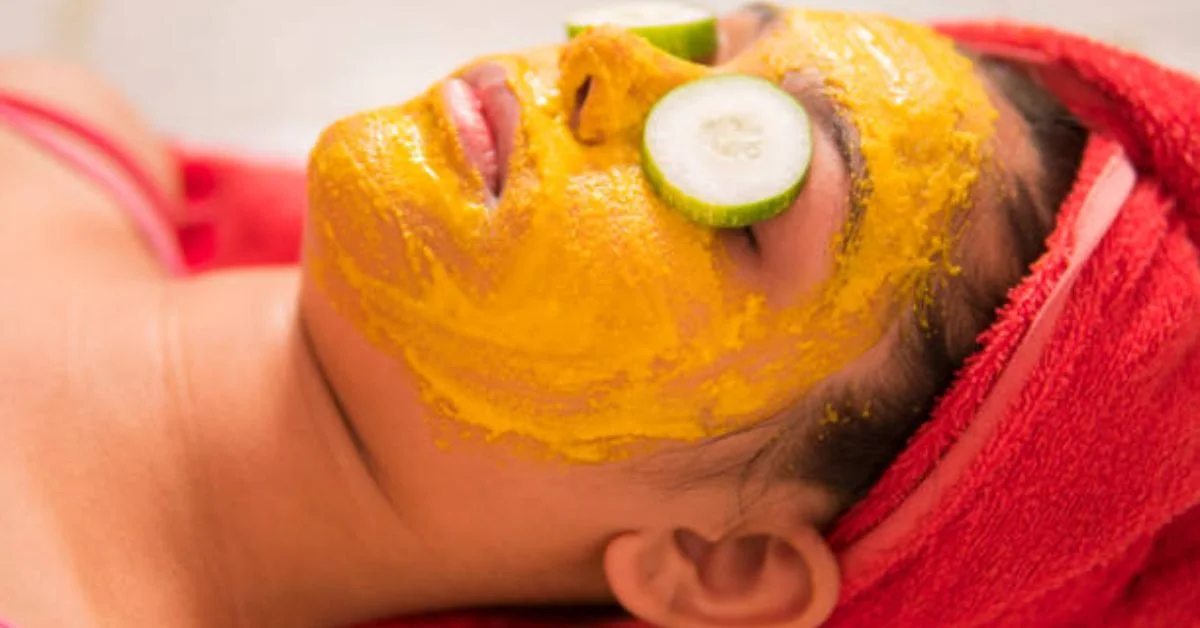
In the world of skincare, treatments are often inspired by nature’s own powerful ingredients. One such treatment, the Yellow Facial, takes its name from its distinctive golden hue, often derived from turmeric, saffron, marigold, or other natural plant extracts. While the idea of applying something bright yellow to the skin might raise eyebrows for those unfamiliar with the treatment, the benefits of this approach are rooted in centuries of traditional beauty rituals and are increasingly appreciated in modern skincare.
The Yellow Facial is more than a visual novelty. It represents a balanced approach to skincare that combines natural brightening, antioxidant protection, anti-inflammatory benefits, and gentle nourishment. In this article, we’ll explore what makes the Yellow Facial unique, how it works, its key ingredients, its benefits for various skin types, and how it fits into a holistic approach to beauty and self-care.
Understanding the Concept of the Yellow Facial
The name Yellow Facial is derived primarily from the striking color of its main active ingredients. In many versions, turmeric — a bright yellow spice long valued in South Asian and Middle Eastern cultures — plays a starring role. In others, botanical extracts such as calendula petals, chamomile flowers, or saffron threads contribute to the color as well as the skin benefits.
The Yellow Facial is designed to target dullness, uneven skin tone, and tired-looking complexions. It aims to leave the skin not only looking brighter but also feeling healthier, more hydrated, and soothed. Unlike harsh bleaching or chemical whitening treatments, the Yellow Facial works through gentle exfoliation, antioxidant action, and natural pigment regulation, making it appealing to those who prefer a more holistic approach to beauty.
Origins and Traditional Roots
The Yellow Facial has deep roots in traditional skincare practices. In Indian beauty rituals, turmeric paste has long been applied to brides before weddings to create a glowing complexion. Similar golden-hued treatments can be found in other cultures: saffron-infused masks in Persian traditions, calendula salves in European herbalism, and marigold applications in Latin American folk remedies.
These historical uses share common goals — preparing the skin to look vibrant, maintaining its health, and offering protection against environmental stress. By combining these traditional practices with modern spa techniques, the Yellow Facial bridges the gap between heritage and innovation.
Key Ingredients in a Yellow Facial
While formulations vary depending on the spa, brand, or DIY recipe, most Yellow Facials include a combination of these active ingredients:
- Turmeric Extract or Powder – Known for its bright color and anti-inflammatory, antibacterial, and antioxidant properties. Turmeric can help calm redness, reduce minor breakouts, and improve overall skin tone.
- Saffron – A luxurious ingredient that has been valued for centuries for its ability to enhance skin brightness, improve texture, and add a luminous quality to the complexion.
- Calendula (Marigold) – Gentle and soothing, calendula is often used to reduce skin irritation and support healing.
- Chamomile – Known for calming sensitivity and reducing puffiness, chamomile complements the other brightening agents with its softening effect.
- Milk, Yogurt, or Plant-Based Alternatives – These act as carriers for active ingredients, offering lactic acid for gentle exfoliation and hydration.
- Botanical Oils (Jojoba, Rosehip, Almond) – These provide nourishment, seal in moisture, and improve skin elasticity.
How the Yellow Facial Works
A Yellow Facial typically involves several steps designed to prepare the skin, deliver active ingredients effectively, and seal in benefits:
- Cleansing – The treatment begins with a gentle cleanse to remove dirt, makeup, and surface oils without stripping the skin’s moisture barrier.
- Exfoliation – A mild scrub or enzymatic exfoliant removes dead skin cells, allowing the brightening ingredients to penetrate more effectively.
- Application of Yellow Mask – The signature step: a thick, golden paste or gel is applied evenly across the face and neck. This may be left on for 15–30 minutes to allow the skin to absorb its nutrients.
- Massage – Some treatments include a facial massage while the mask is on, stimulating circulation and promoting lymphatic drainage.
- Rinse and Tone – The mask is gently removed, and a hydrating toner is applied to balance the skin’s pH.
- Moisturizing and Sun Protection – The session ends with a moisturizer to lock in hydration, and, if done in daylight hours, a layer of SPF to protect the newly refreshed skin.
Benefits of the Yellow Facial
The Yellow Facial offers a wide range of benefits for different skin needs:
- Brightening Dull Skin – Natural pigments in turmeric and saffron can enhance skin radiance over time.
- Evening Out Skin Tone – Regular treatments may reduce the appearance of mild discoloration or uneven patches.
- Soothing Inflammation – Anti-inflammatory compounds can calm mild redness or irritation.
- Antioxidant Protection – Helps defend against environmental stressors like pollution and UV exposure.
- Gentle Exfoliation – Removes surface buildup for a smoother texture without harsh chemicals.
Suitability for Different Skin Types
One of the strengths of the Yellow Facial is its adaptability.
- Normal Skin – Enhances natural glow and maintains balanced hydration.
- Dry Skin – Works best with added oils or hydrating agents to nourish deeply.
- Oily/Combination Skin – Turmeric’s balancing properties can help regulate excess sebum.
- Sensitive Skin – Calendula and chamomile versions are ideal, though patch testing is advised for turmeric sensitivity.
Incorporating the Yellow Facial into a Skincare Routine
While a single Yellow Facial can create an instant glow, consistent use brings cumulative benefits. A professional treatment once every 4–6 weeks can be complemented by gentler at-home versions once a week.
At-home care might include turmeric-infused masks, saffron milk rinses, or calendula toners. However, it’s important to maintain a balanced routine, including daily cleansing, moisturizing, and sun protection to maximize results.
Precautions and Tips
While the Yellow Facial is generally safe, a few points are worth noting:
- Staining – Turmeric can leave a temporary yellow tint on very fair skin, which usually fades in a few hours.
- Patch Test – Always test new ingredients on a small area to check for allergies.
- Sun Protection – Brightened, freshly exfoliated skin may be more sensitive to sunlight. Use SPF consistently.
Why the Yellow Facial Stands Out in Modern Skincare
In an industry often dominated by synthetic actives and high-tech devices, the Yellow Facial represents a return to nature — without sacrificing effectiveness. It’s not simply a trend but part of a growing movement toward treatments that are gentle, sustainable, and culturally rooted.
The treatment’s sensory aspects — the color, the earthy aroma of turmeric, the soothing textures — make it as much a self-care ritual as a cosmetic procedure.
Conclusion
The Yellow Facial is a celebration of natural beauty traditions, transformed into a modern skincare treatment that supports healthy, radiant skin. By blending time-tested botanicals with professional spa techniques, it offers a holistic experience that brightens, soothes, and revitalizes.
Whether you seek a quick glow before an important event or long-term improvement in skin tone and texture, the Yellow Facial can be a rewarding addition to your beauty regimen. It is more than a treatment — it’s a reminder that nature often holds the key to the healthiest skin.
FAQs About Yellow Facial
1. What is the Yellow Facial?
It’s a brightening skincare treatment using turmeric, saffron, and botanicals to enhance skin radiance and health naturally.
2. How often can I get a Yellow Facial?
Professional treatments are recommended every 4–6 weeks, with gentler at-home versions once a week if desired.
3. Can the Yellow Facial help with acne?
Turmeric’s antibacterial and anti-inflammatory properties may help reduce mild breakouts and calm post-acne marks.
4. Will turmeric stain my skin?
On very fair skin, a temporary yellow tint may appear but usually fades within hours after washing.
5. Is the Yellow Facial safe for sensitive skin?
Yes, especially when formulated with soothing botanicals like calendula, though a patch test is recommended.
For more information, click here.







